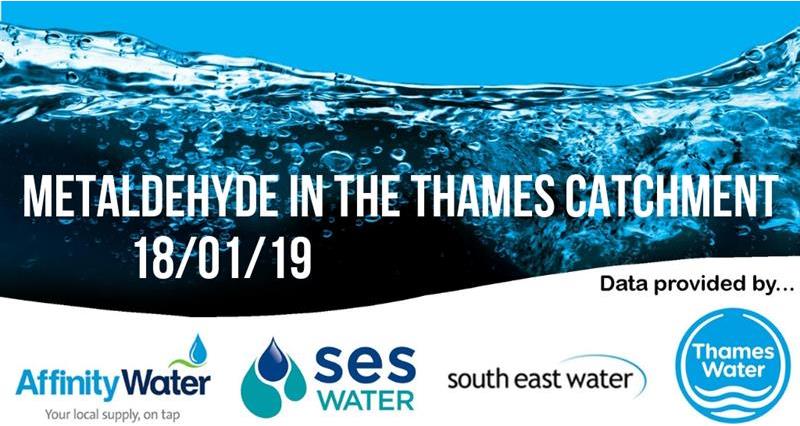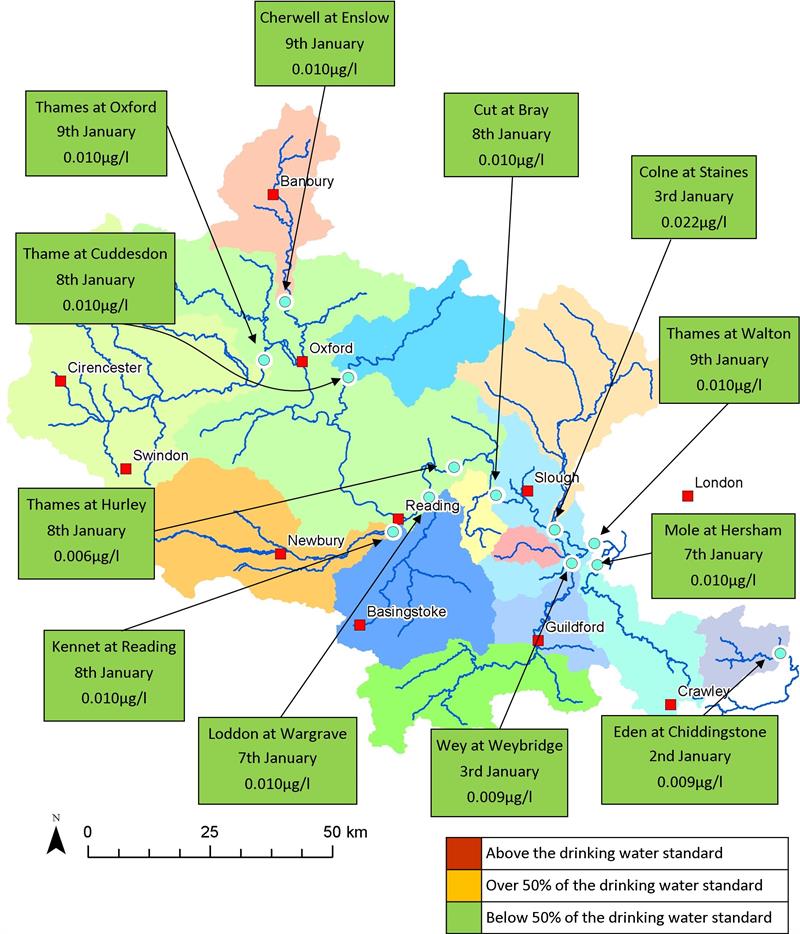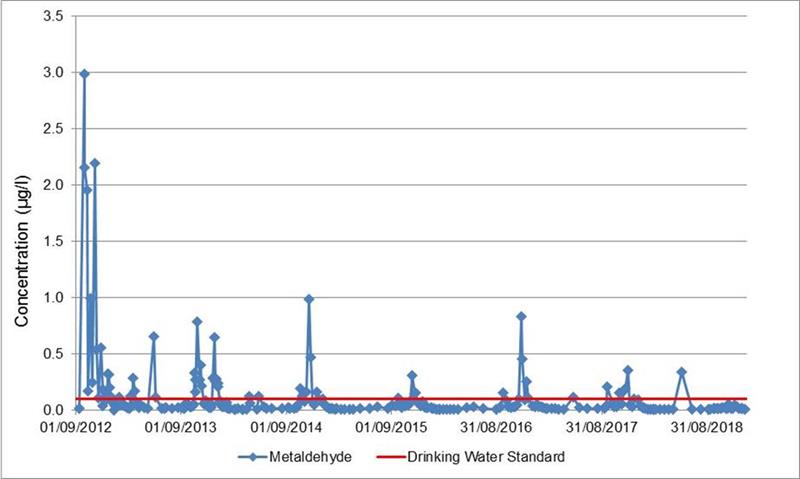Metaldehyde in the catchment
In preparation for the phasing out of metaldehyde, consider reducing your reliance on chemical control measures by adopting a wider range of options in your Integrated Pest Management (IPM) programme to control slug numbers. If you need to use chemical control, use ferric phosphate-based pellets instead of metaldehyde and, as always, follow stewardship and best practice guidelines. In some areas there are water company funded initiatives available to support you until the ban comes into force, so contact your local water company to find out more. Note that contact details can be found at the bottom of this update.
Please see the map and graph below for 12 monitoring locations within the Thames catchment.
Latest Results
The latest results show that metaldehyde concentrations across all 12 monitoring sites have remained well below the drinking water standard this week. Recorded concentrations have been significantly lower with 11 of the 12 monitoring locations at or just above the laboratory limit of detection for metaldehyde. The start of the New Year has been particularly dry and it is likely that this has had a part to play in the results observed. The only site to deviate from this trend is the Colne at Staines with a concentration of 0.022µg/l, still significantly below the drinking water standard. If you do need to make any further slug pellet applications in the coming weeks please consider water protection, use ferric phosphate-based pellets and, as always, follow best practice guidelines (www.getpelletwise.co.uk).
Focus on… Thame at Cuddesdon
Metaldehyde concentrations in the River Thame at Cuddesdon have previously exceeded the drinking water standard 64 times since monitoring began in 2012. Concentrations were particularly high from autumn 2012 to autumn 2014, with 39 of the 64 exceedances recorded in this two year period alone. The highest concentration recorded at the River Thame at Cuddesdon was in autumn 2012 with a peak of 2.98µg/l, nearly 30 times the drinking water standard. However, so far this season, concentrations have remained below the 0.1µg/l standard.
To find out more please contact:
Affinity Water: Q2F0Y2htZW50TWFuYWdlbWVudEBhZmZpbml0eXdhdGVyLmNvLnVr, SES Water: Y2F0Y2htZW50QHNlc3dhdGVyLmNvLnVr, South East Water: Y2F0Y2htZW50QHNvdXRoZWFzdHdhdGVyLmNvLnVr or Thames Water: Y2F0Y2htZW50Lm1hbmFnZW1lbnRAdGhhbWVzd2F0ZXIuY28udWs=


